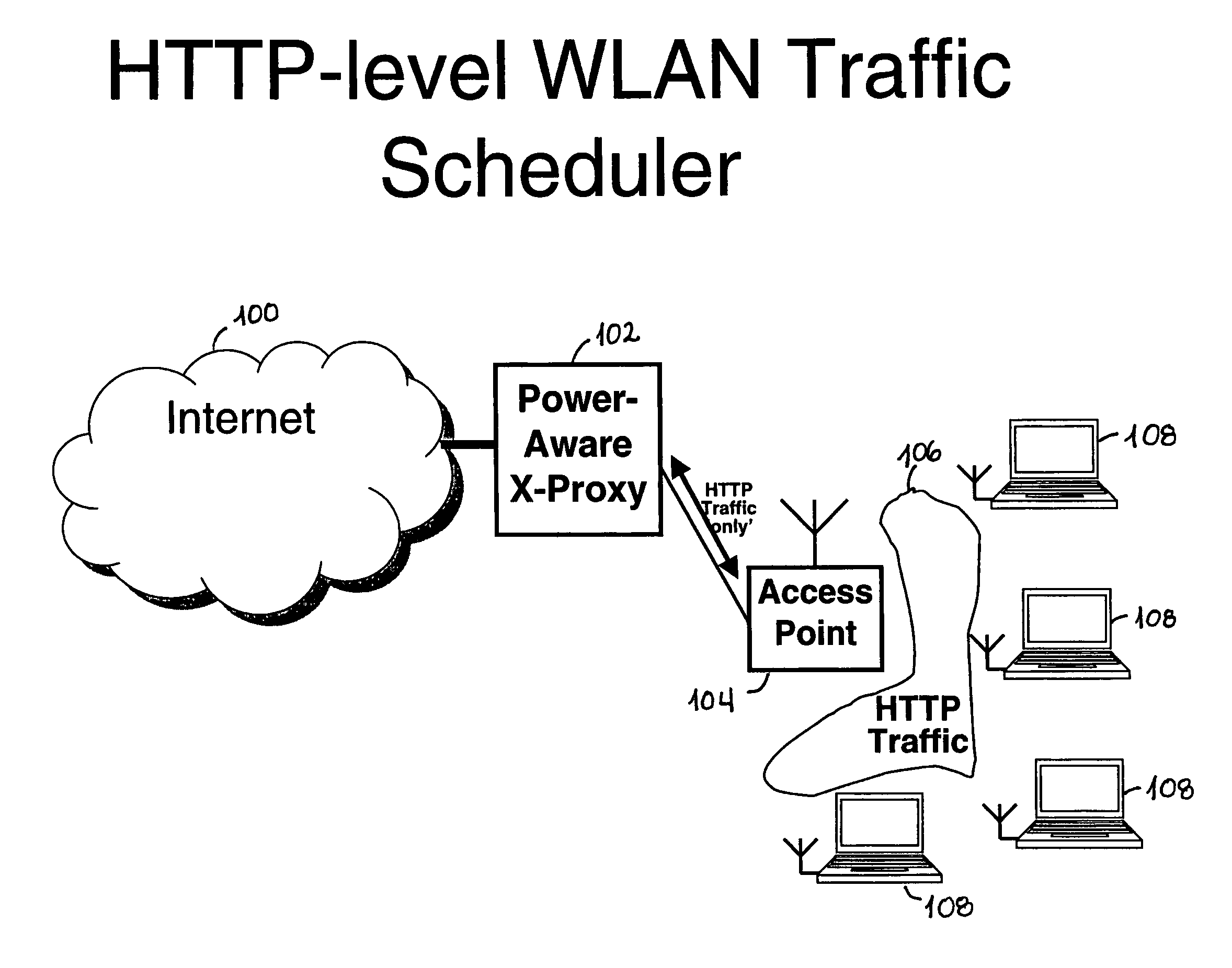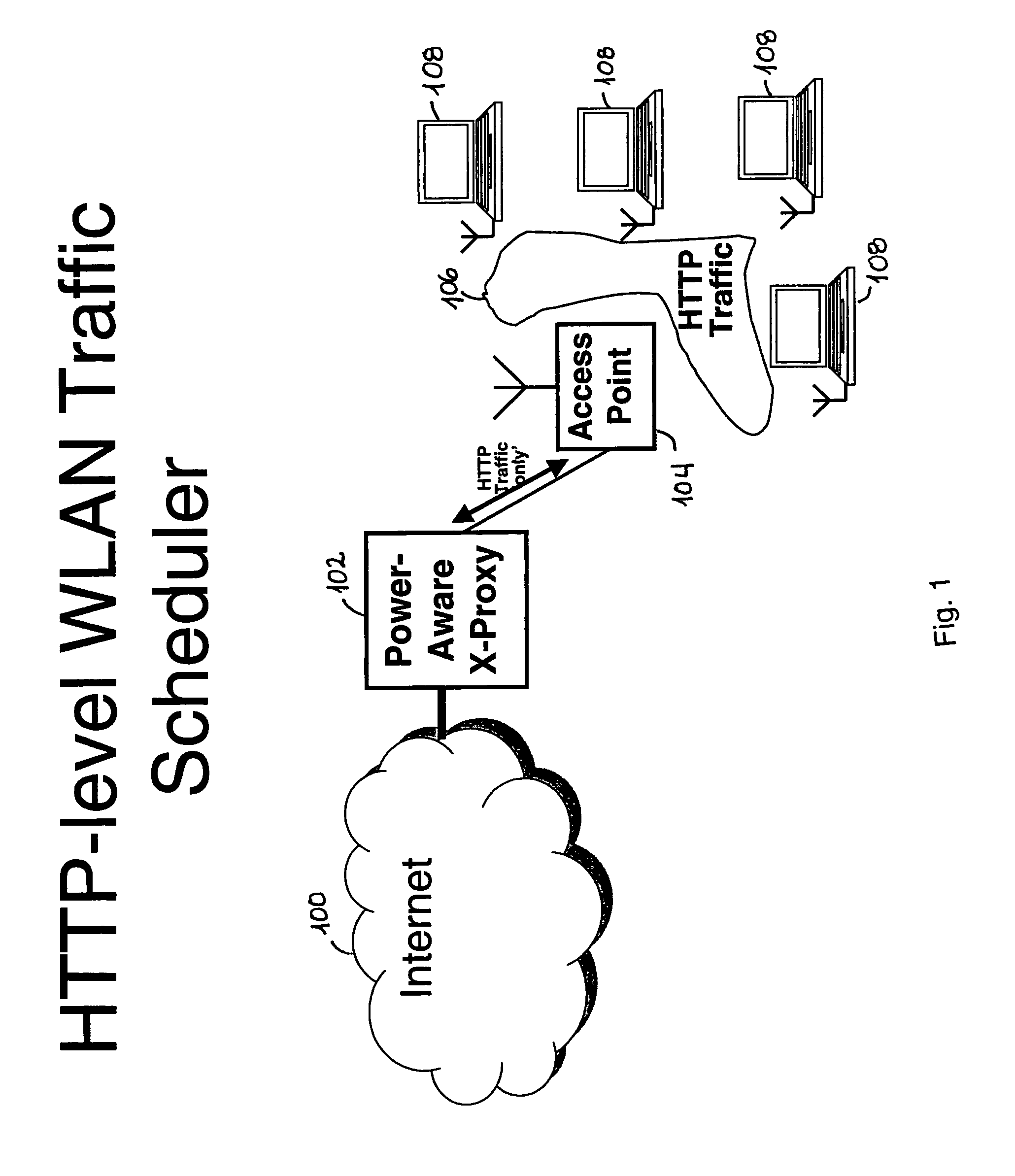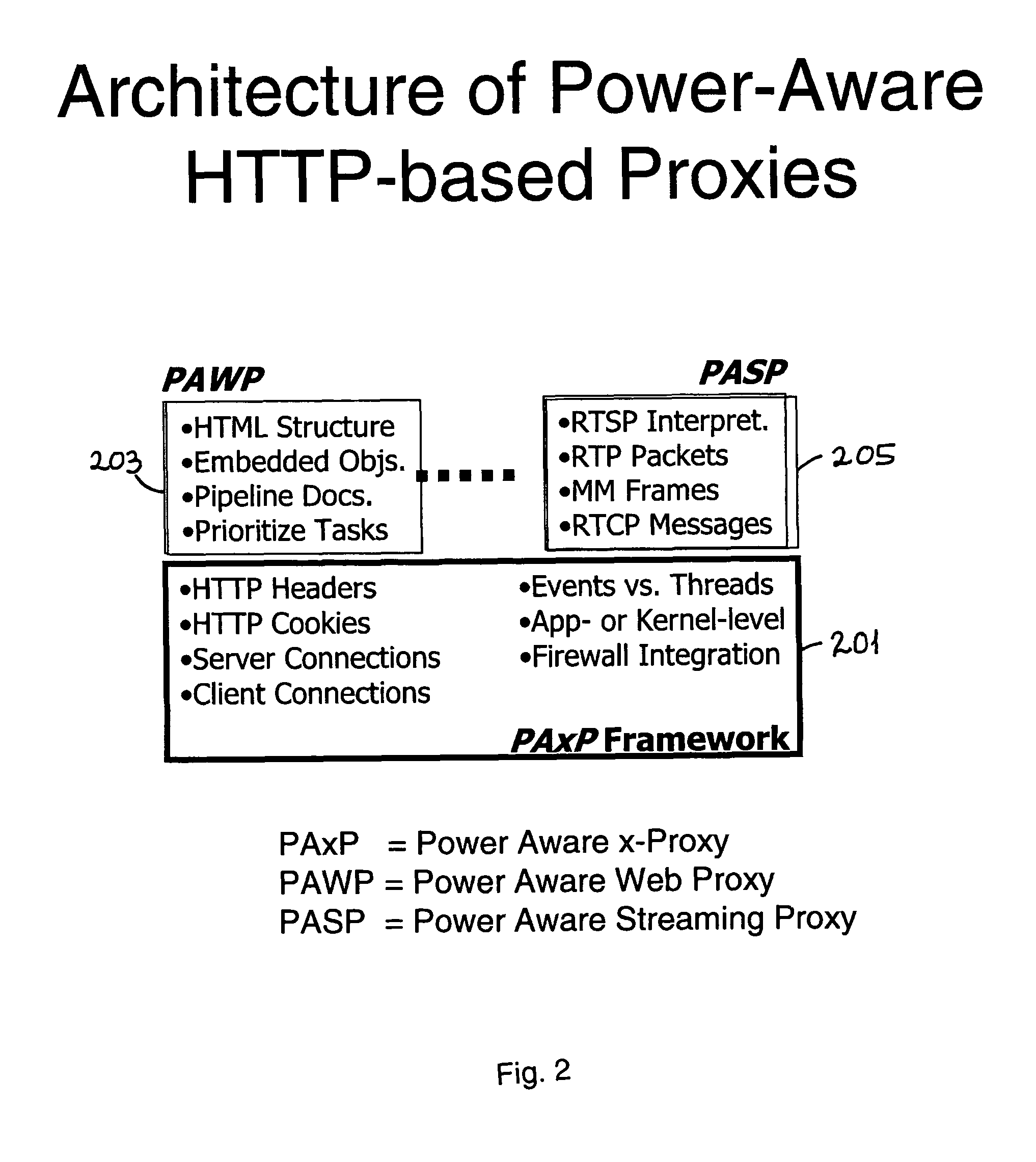Method and apparatus for scheduling wireless LAN traffic
a wireless lan and traffic scheduling technology, applied in the field of computer software, can solve the problems of reducing the energy consumption of mobile clients, power consumption, and the possibility of getting a cache hit, so as to improve energy consumption, influence the usage of wlan bandwidth, and efficiently schedule traffic
- Summary
- Abstract
- Description
- Claims
- Application Information
AI Technical Summary
Benefits of technology
Problems solved by technology
Method used
Image
Examples
Embodiment Construction
[0023]FIG. 1 illustrates a wireless LAN architecture using an existing Power-Aware Proxy to support client applications and schedule incoming Internet traffic, while FIG. 2 illustrates existing architecture of a Power-Aware HTTP-based Proxy.
[0024]As shown in FIG. 1, a conventional PAxP proxy 102, which accepts or provides content from or to the internet 100, is typically in communication (via HTTP traffic only) with one or more access points 104, which themselves are in communication, via further HTTP traffic 106, with various clients 108.
[0025]Referring to FIG. 2, HTTP proxies are normally implemented as extensions to a Proxy-Aware x-Proxy (PAxP) framework 201, which implements the core HTTP processing tasks. The framework extensions use techniques specific to the HTTP payload, such as web documents or multimedia streams, to control the traffic shaper and to compensate for any negative impact that traffic shaping may have.
[0026]Such an approach assumes that the cost of bandwidth ac...
PUM
 Login to View More
Login to View More Abstract
Description
Claims
Application Information
 Login to View More
Login to View More - R&D
- Intellectual Property
- Life Sciences
- Materials
- Tech Scout
- Unparalleled Data Quality
- Higher Quality Content
- 60% Fewer Hallucinations
Browse by: Latest US Patents, China's latest patents, Technical Efficacy Thesaurus, Application Domain, Technology Topic, Popular Technical Reports.
© 2025 PatSnap. All rights reserved.Legal|Privacy policy|Modern Slavery Act Transparency Statement|Sitemap|About US| Contact US: help@patsnap.com



